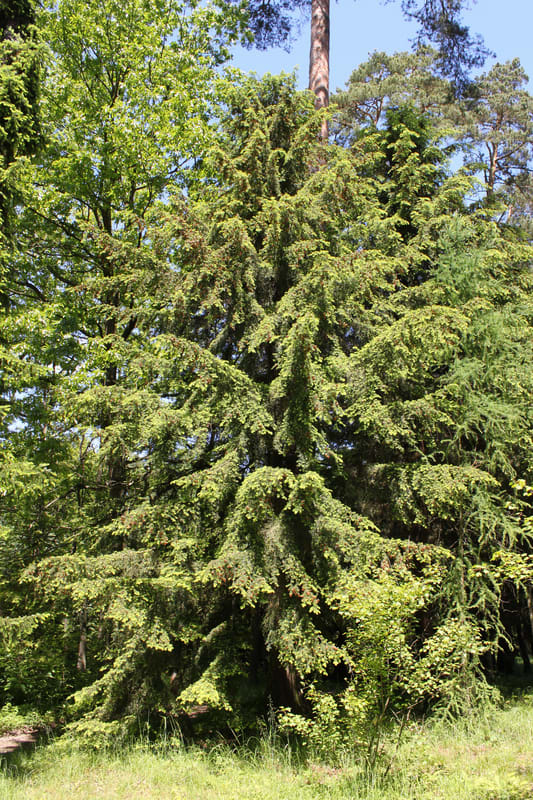
🌿 Morphology
🌞 Growing conditions
🌍 Origin and family
🌾 Uses
Warning: Despite the care taken in writing this sheet, it is essential to cross-reference sources before using or consuming any plant. When in doubt, consult a qualified professional
Permaculture uses
Carolina Hemlock is primarily used for erosion control on slopes and as a windbreak. It provides habitat for wildlife, including birds and small mammals. Its dense foliage makes it an excellent privacy screen. There are no commonly known edible or medicinal uses.
Permapeople description
A slow-growing evergreen tree with a graceful, weeping habit. It is native to the southern Appalachian Mountains.
Botanical description
Tsuga caroliniana, the Carolina Hemlock, is an evergreen coniferous tree native to the southeastern United States. It typically grows to a height of 40-70 feet with a trunk diameter of 1-3 feet. The crown is broadly conical, often with a slightly weeping habit. The bark is scaly and grayish-brown. The needles are flattened, approximately 0.5-0.75 inches long, with two distinct white bands on the underside. The cones are small, oblong, and about 0.75-1.25 inches long, maturing in the autumn. It is closely related to Eastern Hemlock (Tsuga canadensis) but has longer needles and cones and is generally more heat tolerant. Its chromosome number is 2n=24.
Companion planting
Carolina Hemlock benefits from being planted with other shade-tolerant species that provide a cool, moist environment. Avoid planting in areas with full sun and dry, exposed conditions. It is generally compatible with other woodland plants found in its native range, such as Rhododendrons, Azaleas, and Mountain Laurel. Avoid planting near aggressive, fast-growing species that might outcompete it for resources.
Propagation methods
Carolina Hemlock is typically propagated by seed. Seedlings can be slow to establish and require consistent moisture and protection from harsh sun and wind. Cuttings are also possible, though success rates can vary. Grafting is sometimes used for specific cultivars.
History and traditions
Historically, the wood of Carolina Hemlock has been used for construction and pulpwood, though it is not as commercially important as some other conifers. Indigenous peoples did not have widespread traditional uses for this specific species, likely due to its limited geographic range, though closely related species may have been used similarly to other evergreens for various purposes. Modern uses are mostly ornamental.
Usage calendar
Seed collection occurs in the fall when cones mature. Sowing is best done in the spring after stratification. Planting of seedlings is ideally done in the spring or fall. Pruning, if necessary, is best done in late winter or early spring before new growth begins. Flowering occurs in the spring.
